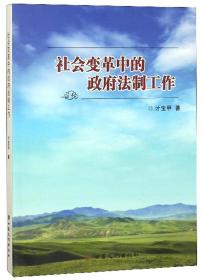
蒙脱石改性与高氯酸根吸附的机理及应用拓展(英文版)
¥ 29.7 3.8折 ¥ 78 全新
仅1件
河北保定
认证卖家担保交易快速发货售后保障
作者罗武辉
出版社中南大学出版社有限责任公司
出版时间2020-05
版次1
装帧其他
货号9787548740216
上书时间2024-12-12
- 在售商品 暂无
- 平均发货时间 27小时
- 好评率 暂无
- 最新上架
商品详情
- 品相描述:全新
图书标准信息
- 作者 罗武辉
- 出版社 中南大学出版社有限责任公司
- 出版时间 2020-05
- 版次 1
- ISBN 9787548740216
- 定价 78.00元
- 装帧 其他
- 开本 16开
- 纸张 胶版纸
- 页数 190页
- 字数 329千字
- 【内容简介】
-
内容介绍 :
本书凝聚了作者多年的科研成果,在理论和应用方面都进行了深入地论述和创新。第1章介绍了新兴污染物高氯酸根的生物毒性与相关处理技术,分析了有机改性蒙脱石在环境修复中的应用与研究现状。第2章概括了本书涉及的固相表征技术及吸附模型。第3章通过甄选六种不同分子结构的传统有机季铵盐为蒙脱石改性剂,探究了改性剂分子结构对高氯酸根吸附的影响机制。第4章研究了改性剂使用量与高氯酸根吸附特征之间的关系,考察了改性蒙脱石的吸附稳定性。第5章通过同位与异位改性对比,开展未干燥与干燥对高氯酸根吸附的影响试验,研究了季铵盐溶出的抑制机制,揭示了改性蒙脱石对高氯酸根吸附除离子交换之外的脱附/再吸附机理。第6章系统地研究了季铵盐改性蒙脱石对多种无机阴离子吸附选择性的决定因素,即吸附位点所处环境介电常数及目标阴离子吸附前后的水合半径。第7章深入研究了改性蒙脱石对典型阴/阳离子型放射性核素的同步吸附特征,揭示了脱附/再吸附是Sr(II)与Re(VI)协同吸附的主要原因。第8章利用了分子层面的物理包裹策略,在有效抑制季铵盐溶出的同时,实现了阴/阳无机离子的协同吸附,论述了海藻酸盐/有机蒙脱石复合材料在复杂污染水体修复中的应用前景。以上工作由江西理工大学罗武辉、黄祈栋、袁秀娟和任嗣利共同完成,罗武辉负责文字撰写、内容统筹与数据解译,黄祈栋和袁秀娟负责数据收集、图形制作与润色,任嗣利负责材料表征分析。 - 【目录】
-
Contents
CHAPTER 1
Introduction
1.1 Perchlorate: source, chemistry and distribution
1.2 Transport of perchlorate in nature
1.3 Toxicity and regulatory standard
1.4 Technologies for removal of perchlorate
1.4.1 Biodegradation
1.4.2 Chemical reduction
1.4.3 Physical transfer
1.5 Unmodified and organo-modified montmorillonite
1.5.1 Unmodified montmorillonite
1.5.2 Modification of montmorillonite
1.5.3 Synthesis of organo-montmorillonite
1.6 Application of organo-montmorillonite
1.7 Removal of perchlorate and related species by organo-montmorillonite
1.8 Objectives and outline of this book
CHAPTER 2
Adsorption Models and Characterizations
2.1 Materials and reagents
2.2 Solid characterizations
2.3 Quantification of substances in aqueous solution
2.4 Adsorption kinetics models
2.5 Adsorption isotherm models
2.5.1 Single-component system
2.5.2 Multi-component system
2.6 Thermodynamics
2.7 Selectivity coefficient
2.8 Error functions
CHAPTER 3
Effect of Molecular Structure of Surfactant on Perchlorate Removal by Various Organo-montmorillonites
3.1 Modification of montmorillonite using various alkyl quaternary ammonium salts
3.2 Adsorption experiments
3.3 Characterizations of organo-montmorillonite
3.4 Adsorption capacity of perchlorate on organo-montmorillonites
3.5 Adsorption kinetic of perchlorate on organo-montmorillonites
3.6 Adsorption selectivity of perchlorate on organo-montmorillonites
3.7 Conclusions
CHAPTER 4
Surfactant-Modified Montmorillonite by Benzyl Octadecyl Dimethyl Ammonium Chloride for Removal of Perchlorate
4. 1 Preparation of benzyl octadecyl dimethyl ammonium-modified montmorillonite
4.2 Adsorption experiments
4.3 X-ray diffraction
4.4 FTIR spectroscopy
4.5 TG-DTA analyses
4.6 Zeta potential analyses
4.7 FESEM observation and EDX analyses
4.8 Adsorption characteristics
4.8.1 Adsorption isotherms
4.8.2 Effect of temperature
4.8.3 Effect of initial solution pH
4.8.4 Effect of adsorption time
4.8.5 Effects of co-existing anions
4.9 Influence of modifier dosage on its distribution and perchlorate uptake
4.10 Conclusions
CHAPTER 5
Optimization of Hexadecyl Pyridinium-Modified Montmorillonite for Removal of Perchlorate Based on Adsorption Mechanisms
5.1 Preparation of hexadecyl pyridinium-modified montmorillonite and adsorption of perchlorate: in-situ and ex-situ strategies
5.2 Uptake of hexadecyl pyridinium on montmorillonite
5.3 Uptake of perchlorate and release of hexadecyl pyridinium
5.4 Solid characterizations
5.5 Isotherms and thermodynamics of perchlorate adsorption
5.6 Kinetics of perchlorate adsorption
5.7 Mechanisms of adsorption optimization
5.8 Conclusions
CHAPTER 6
Selective Adsorption of Inorganic Anions on Unwashed and Washed Hexadecyl Pyridinium-Modified Montmorillonite
6. 1 Synthesis of unwashed and washed hexadecyl pyridinium-modified montmorillonite and adsorption tests
6. 2 Selectivity coefficient for anion adsorption on hexadecyl pyridinium-modified montmorillonite
6.3 pH and Eh of equilibrium solution
6.4 Adsorption of anions by hexadecyl pyridinium-modified montmorillonites
6.5 Relationships of adsorption capacity and selectivity with anionic radius and hydration energy
6.6 X-ray diffraction
6.7 Mechanism of selective adsorption of anion on hexadecyl pyridinium-modified montmorillonite
6.8 Conclusions
CHAPTER 7
Synergistic Effect of Sr2 and ReO4− Adsorption on Hexadecyl Pyridinium-Modified Montmorillonite
7. 1 Modification of montmorillonite by hexadecyl pyridinium in the specific dosage
7.2 Adsorption of strontium and perrhenate ions
7.3 Contents of hexadecyl pyridinium and uptakes of strontium and perrhenate ions on modified montmorillonites
7.4 Adsorption isotherms for strontium and/or perrhenate ions on optimized modified montmorillonite
7.5 Characterization of the solid residues after adsorption of strontium and/or perrhenate ions on optimized modified montmorillonite
7.6 Mechanism of simultaneous adsorption
7.7 Conclusions
CHAPTER 8
Synergistic Effect of ClO4- and Sr2 Adsorption on Alginate-Encapsulated Organo-Montmorillonite Beads: Implication for Radionuclide Immobilization
8. 1 Preparation of organo-montmorillonite/alginate beads
8.2 Adsorption experiment of perchlorate and/or strontium ions
8.3 Adsorption characteristics of perchlorate and/or strontium ions on the organo-montmorillonite/alginate beads
8.3. 1 Influence of solution pH
8.3. 2 Adsorption kinetics
8.3. 3 Adsorption isotherms
8.4 Characterization of the organo-montmorillonite/alginate beads before and after perchlorate and/or strontium ions adsorption
8.5 Extended application of organo-montmorillonite/alginate beads
8.6 Conclusions
References
点击展开
点击收起
— 没有更多了 —












以下为对购买帮助不大的评价